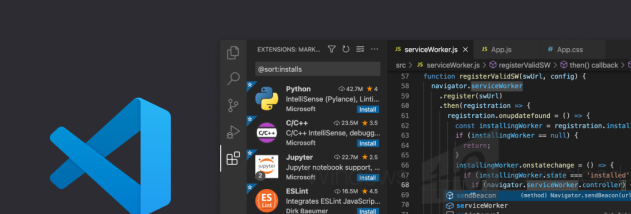
- #VISUAL STUDIO CODE COVERAGE GREY HOW TO#
- #VISUAL STUDIO CODE COVERAGE GREY SOFTWARE#
- #VISUAL STUDIO CODE COVERAGE GREY WINDOWS#
If you append the -v flag to go test, the test will print out the names of all the executed test functions and the time spent for their execution. to run the tests for all the packages in the codebase: $ go test. You can run tests in a specific package by passing the relative path to the package, for example, go test. , which caches successful test results and avoids unnecessary reruns.

You can also opt into package list mode by using go test. When you use go test as above, caching is disabled, so the tests are executed every time. When testing is done, a summary of the test, either PASS or FAIL, will be printed to the console, as seen in the code block below: $ go test The go test command compiles the sources, files, and tests found in the current directory, then runs the resulting test binary. As long as Go is installed, the go test command is already available on your machine. Now, let’s use the go test command to run our test in the terminal. If not, the Errorf() method is invoked, failing the test. The latter part of the test checks if the values of want and got are equal. want is assigned to the expected result 6. In our example in the previous section, the got variable inside the TestMultiply() function is assigned to the result of the Multiply(2, 3) function call. The type exports several methods for tasks like reporting errors, logging intermediate values, and specifying helper methods. It takes a single argument, which is a pointer of type testing.T. In Go, a test function must always use the following signature: func TestXxx(*testing.T)Ī test’s name begins with the Test prefix, followed by the name of the function being tested, Xxx. Note that Go does not ship test files in any binaries that it produces because they are not needed for the code to run.

In the example above, the Multiply function is in integers.go, so its tests are placed in integers_test.go. The convention for naming test files in Go is to end the file name with the _test.go suffix and place the file in the same directory as the code it tests. T.Errorf("Expected '%d', but got '%d'", want, got) In the current directory, create a file called integers_test.go and add the following code to it: // integers_test.go Let’s write a test to verify that the Multiply() function works correctly. Multiply returns the product of two integers In the directory root, create a file called integers.go and add the following code: // integers.go Then, we’ll write a test that verifies the correctness of its output.įirst, create a directory on your file system and navigate into it. To understand testing in Go, we’ll write a basic program that computes the product of two integers. Let’s get started! Writing your first test in Go By the end of this article, you’ll understand concepts like table driven tests, dependency injection, and code coverage.
#VISUAL STUDIO CODE COVERAGE GREY HOW TO#
In this tutorial, we’ll cover how to write unit tests in Go using the built-in testing package and several external tools. A good unit test can also serve as a form of documentation for developers who are new to the project. Unit testing helps to find and fix bugs early in the development cycle, and it prevents regressions when refactoring. In unit testing, developers test individual functions, methods, modules, and packages to verify their correctness. I'm currently working on my own products and teaching programming via my website freshman.tech.
#VISUAL STUDIO CODE COVERAGE GREY SOFTWARE#
By default, coverage and test results are shown by markers in the left gutter of the editor: a marker is red if any tests related to the current statement are failing, green if all tests are passing, and grey if there are no tests covering this statement.Ayooluwa Isaiah Follow I'm a software developer from Nigeria with a keen interest in web technologies, security, and performance. Visualize code coverage by clicking Highlight code. Coverage results (how tests cover particular classes and methods in your code) will be shown in the Unit Test Coverage tool window. Test results will be shown in real time in the newly opened session tab. This will run a normal unit tests session but dotCover will collect coverage data in the background. If you want to analyze all tests, select the top-level node in the tree.Ĭlick Cover Unit Tests. In the Unit Test Explorer window, select the tests whose coverage you want to analyze. Here you can take a look at how many tests are there in the solution. This will open the Unit Test Explorer tool window.
#VISUAL STUDIO CODE COVERAGE GREY WINDOWS#
To analyze coverage of unit tests in a solutionĬhoose View | Tool Windows | Unit Tests from the main menu.

The task is to understand how much of the code is covered. Code in the solution is covered with some unit tests. You have a solution opened in Visual Studio. The most basic scenario of using dotCover is measuring how much of your code do tests cover. Analyze Coverage of Unit Tests (Basic Scenario)


 0 kommentar(er)
0 kommentar(er)
